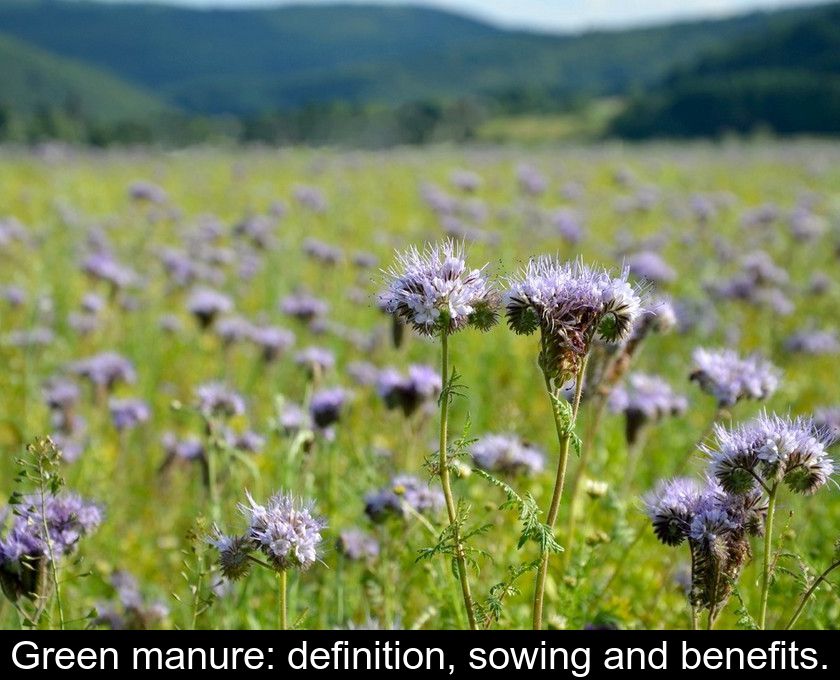Green Manure: Definition, Sowing And Benefits.
Green manure is a simple and ecological solution to improve the structure and texture of depleted soil at the end of the season. This process involves sowing and burying certain fast-growing plants such as phacelia, clover, or vetch. Here is a presentation of this 100% natural method.
What is green manure?
A green manure is a fast-growing plant that is temporarily cultivated to improve soil structure and enrich the land.
This method involves sowing fast-growing plants, which continue to grow even in the late season and cover the ground over a large area.
These plants are then intended to be buried in the soil to naturally enrich the soil and provide nutrients for the next crop.
What are the benefits of green manure?
Making green manure is a natural method with multiple benefits:
- By quickly fermenting, the buried plants improve soil structure and provide humus and nitrogen.
- As a vegetative cover, temporary crops help limit erosion, soil compaction, and garden leaching.
- This vegetative cover also acts as mulch, helping to combat weeds and therefore limit or avoid the use of herbicides.
What green fertilizer to sow?
Fast-growing annual forage species are generally used as green manure.
You can, for example, choose forage rape, white mustard, radish, crimson clover, purple clover, vetch, sainfoin, alfalfa, comfrey, nettle, buckwheat, or sunflower.
The most common varieties to sow as green manure are:
- Phacelia, which is a very good source of nitrogen
- Winter vetch, which competes with weeds
- White mustard, which is reputed to clean the soil
- Crimson clover, which attracts pollinating insects
- Buckwheat, which provides phosphorus to the soil.
How to sow and bury green manure?
A plant used as green manure can be sown before a winter or spring crop. The sowing date varies depending on the chosen species.
The first step is to sow the seeds:
- lightly scratch the surface to be seeded
- sow the seeds broadcast
- rake to bury the seeds and then compact the soil.
The seeds start to germinate after a few days.
The second step is to bury the plants before a new crop (for example, at the end of October):
- mow, even if the vegetative cycle is not complete
- wait for about ten days
- dig the soil to bury the plants.
With this method, you can easily and naturally enrich depleted soil. The sown plants draw minerals from deep in the soil and fix them. These nutrients are then available for more demanding crops, such as the vegetables in your garden!












